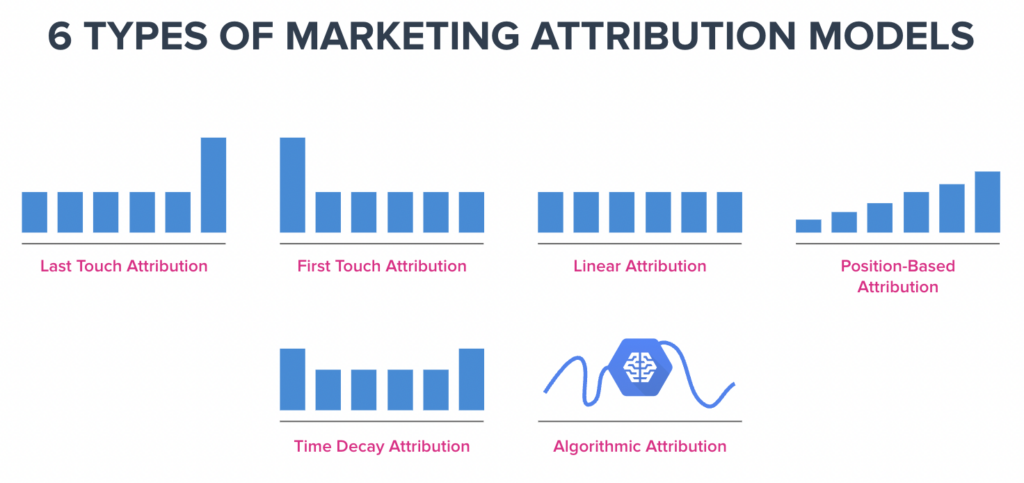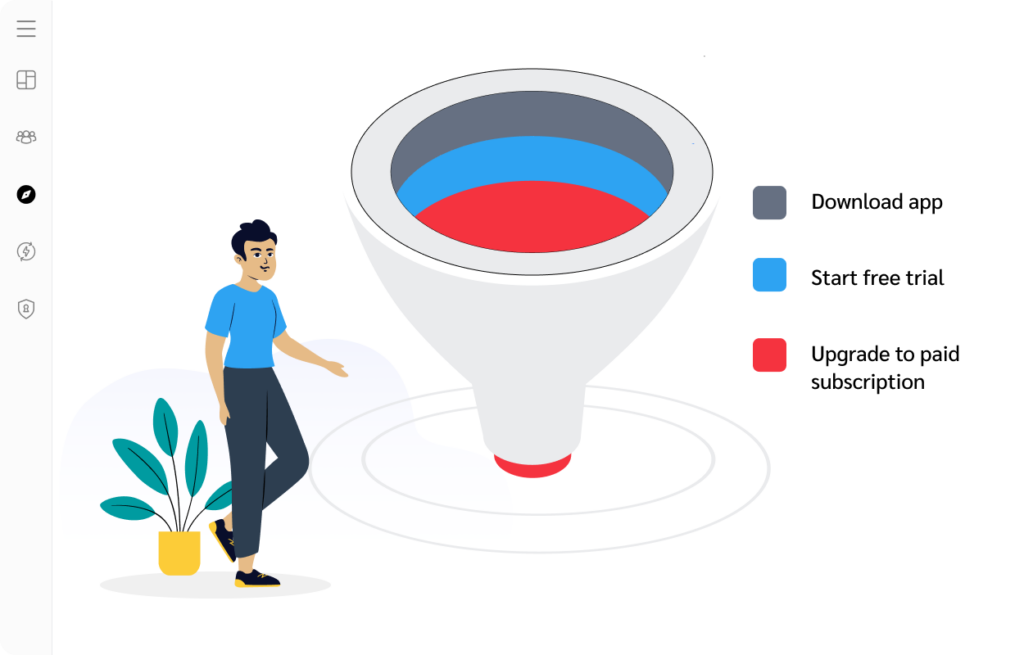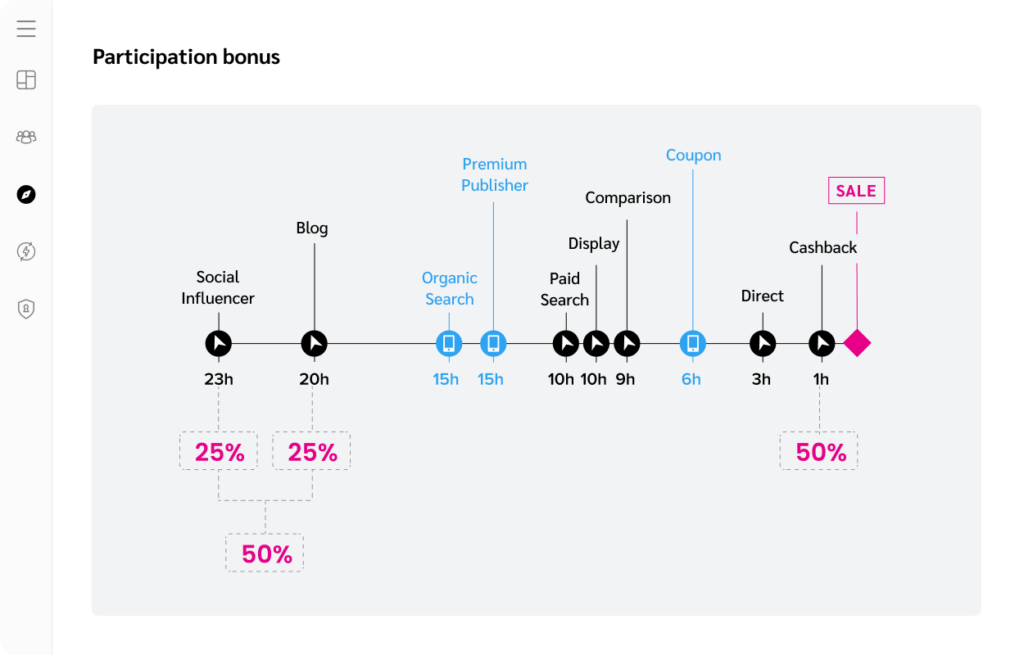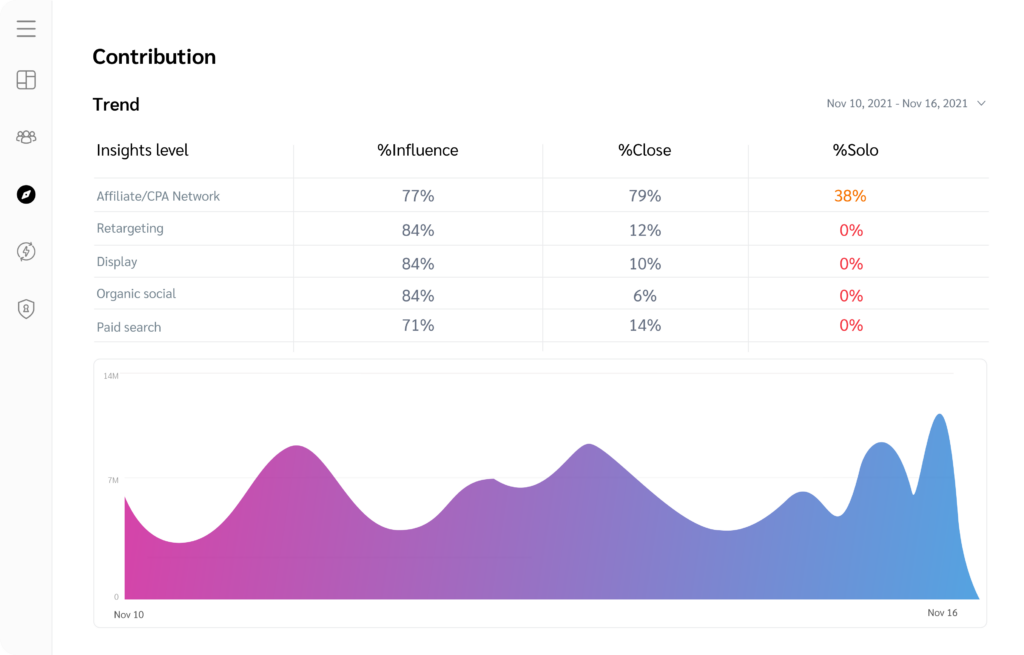Choosing the right marketing attribution model for your business is important, but which one is right for you? With the increase in digital activity and data surrounding the customer’s journey this decision sure has become more challenging. Below is a cheat sheet that shows the pros and cons of marketing attribution models and how new technologies are changing our approach.
What are the different types of attribution models and why does it matter?
Marketing attribution models are used to accurately track which channel partner gets the credit for the conversion. It also adds further datapoints to help understand your buyer’s journey.
Using various multi-channel attribution models across your marketing campaigns enables you to identify which channels are performing the best, where you can optimize your campaigns and where to allocate your budget for the best ROI.
6 types of marketing attribution models
- Last Click Attribution
- First Click Attribution
- Linear Attribution
- Position-Based Attribution
- Time Decay Attribution
- Algorithmic Attribution

This article is a cheat sheet that shows the pros and cons of each marketing attribution types to enable you to better understand which models to use for your various marketing campaigns. By building an ever evolving multi-touch attribution model you can ensure that you continuously drive growth across all channels.
1. Last Click Attribution
Last click attribution assigns all credit to the last marketing event encountered before a conversion.
Pros:
This model is appealing for its simplicity. It is easy to track and requires little thought or advanced technology. Even better, it is built in to just about every web analytic tool, so implementation is a breeze. Last click has historically been the most common method for rewarding channel partners.
Cons:
Methods that reward just one channel limit the marketer’s ability to optimize their channel and gain incremental value from non-traditional partners. Single channel reward systems do not consider conversion path patterns or external factors (like seasonality or market conditions). New technologies that offer greater visibility into the buyer’s journey are rapidly moving this practice toward extinction.

2. First Click Attribution
The inverse of last click, first click attribution assigns all the credit to the first marketing event encountered before a conversion.
Pros:
First click is an easy model to put in place. Attracting a buyer’s attention is tricky. Without that first touch, the conversion would never happen. Choosing to reward that activity above all else makes sense for some business models.
Cons:
Similar to last click, this model only rewards one channel and ignores the contribution of others. Marketers find this limiting when seeking to optimize or demonstrate the value of their efforts. Sophisticated marketers rarely chose this option.
3. Linear Attribution
Sometimes referred to as equal attribution, these even models reward every marketing event in the buyer’s journey equally for the conversion.
Pros:
This model is a good choice for environments where every touchpoint is equally valued during the This model is a good choice for environments where every touchpoint is equally valued during the consideration process. Every participant is rewarded so it is easy to track and manage. Attribution models that reward multiple contributors take a “teamwork” approach.
Cons:
Since all channels receive an even percentage this method is limiting. It does not adjust for high Since all channels receive an even percentage this method is limiting. It does not adjust for high volume media (like retargeting), diminishing returns or the relative effectiveness of individual channel partners. Like other rules-based attribution models, this method does not consider seasonal or macroeconomic contributions.
4. Position-Based Attribution
Standard position-based attribution modeling applies 40% credit each to last and first touch. It then distributes the remaining 20% across each touch in between. These percentages can typically be adjusted manually to accommodate your unique business model, which turns this into more of a customized position-based model.

Pros:
This model is suitable for those who highly value introducers and closers. It rewards those two channels equally, while still giving incentive to contributions throughout the buyer’s journey. This model is useful in environments where high volume media (like retargeting) is in use. Since the model can be adjusted, marketers can modify their payout strategy to suit their needs.
Cons:
Path position attribution ignores patterns in customer behavior and instead assigns an arbitrary value to each marketing event. It puts some marketers at risk of over or underpaying partners because it does not account for changes in their level of contribution.
5. Time Decay Attribution
This model rewards the marketing event closest to the conversion with the majority of the credit and the events prior with a diminishing amount of credit. It can also be done in reverse – assigning the majority of the credit to the introducer.
Pros:
This model appeals to businesses with short sales cycles. It allows them reward key players for their impact on a quick decision and others for the diminishing value they provide
Cons:
Time decay attribution is applied subjectively and does not consider the relative effectiveness of each channel in the customer journey. While it is arguably logical to reserve credit for your most valued player, their contribution might not have occurred without the others. Time decay also ignores event frequency and external factors.
6. Algorithmic Attribution
This model is the most modern attribution method. Algorithmic attribution is the process of assigning a portion of credit for conversion to each touchpoint based on effectiveness. This method uses machine learning, advanced statistical modeling and inferences to continually optimize and customize your model based on results.

Pros:
This marketing attribution model provides its adopters the competitive advantage of being truly data-driven. Technology is used to eliminate the challenge of multiple data sources and provide a single, reliable view of the entire buyer’s journey. Algorithmic attribution incorporates data from online and offline marketing channels and works across all devices.
This allows marketers to spot non-traditional channel opportunities and use them to drive incremental value. Unlike rules based attribution models, algorithmic modeling can adjust for external factors (such as seasonality and market conditions) in order to accurately measure paid media contributions. Marketers can develop deeper, more rewarding relationships with their most productive channel partners while minimizing their spend with non-performers.
Cons:
Algorithmic attribution aims to normalize marketing data that was previously drawn from disparate sources and critics question the methodology. The creation of this technology also required a significant up-front investment from developers. As is typical of cutting-edge products, this investment is reflected in the price.
Summary:
The marketing attribution method you choose will depend on a variety of factors. Naturally you must take into account the maturity of your business, the complexity of your marketing mix and your unique competitive environment.
impact.com clients enjoy the flexibility of our solutions, which allow them to choose the marketing attribution model that best suits their needs. Learn more about our attribution and analytics or get in touch with a growth technologist at grow@impact.com to find out how impact.com’s platform can help grow your business.





